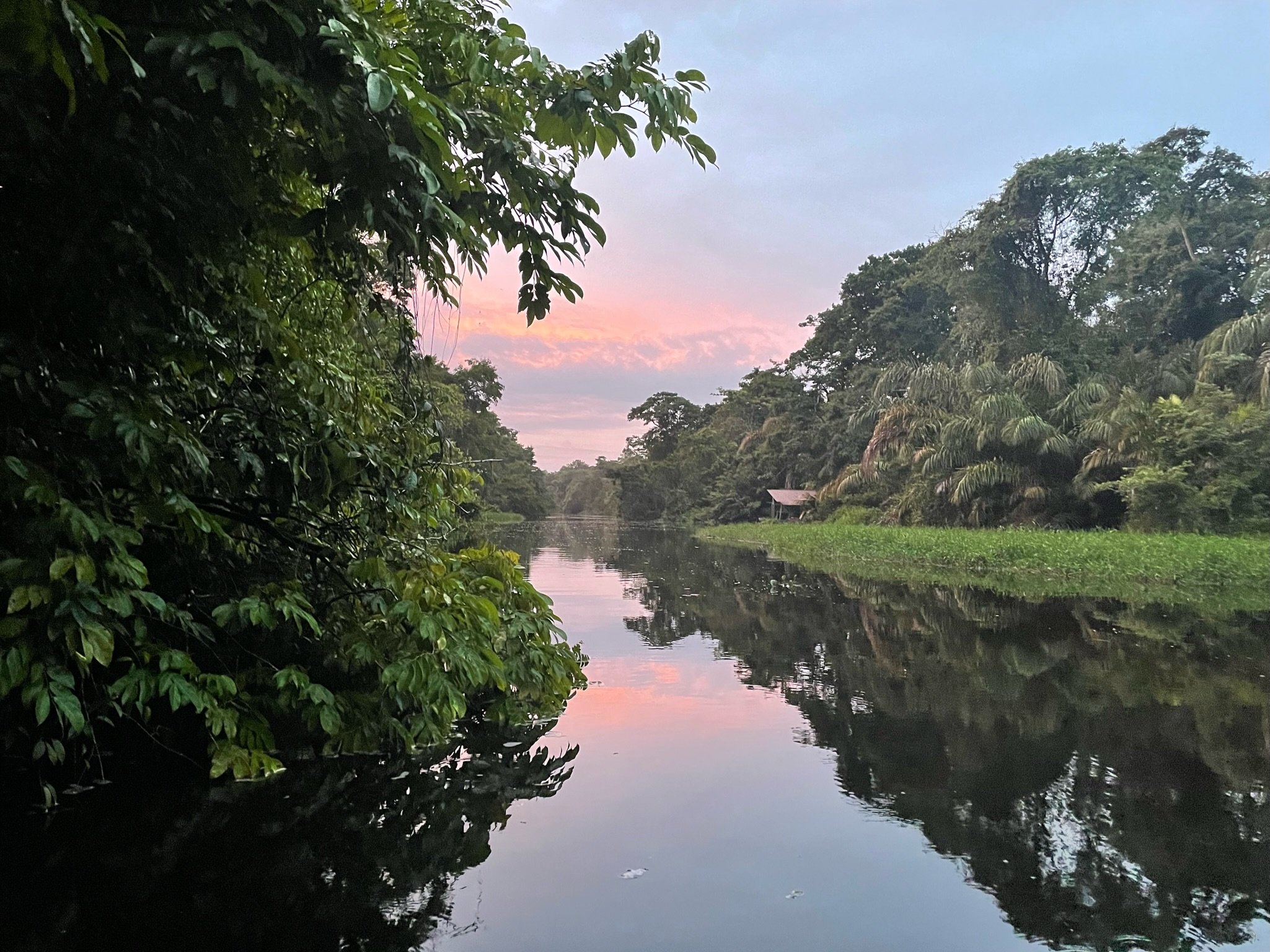Life at the station
Life at the station is basic, but comfortable
The station spans one acre and facilities include: dormitories, a kitchen, a library/meeting building, project room, bathrooms, showers, and laundry facilities. The station has running water, electricity, and access to the internet. It is also equipped with a dock that has motorized and non-motorized boats including canoes and kayaks.
Interns, researchers, and volunteers share rooms in our two dormitory buildings. Each room sleeps between two and six people and is equipped with bunk beds, mattresses, and bedding.
Where is the station?
Caño Palma Biological Station sits on 40 hectares of land located approximately 8 kilometres (5 miles) north of the village of Tortuguero, in north-eastern Costa Rica.
The station is located on the west side of Caño Palma (Palm Canal in English), where it gets its name. As such, the station is accessible only by boat. Between the canal and the Atlantic ocean is a spit of land ~200-300 metres wide, where the small village of San Francisco de Tortuguero is located.
The Tortuguero region is an ancient floodplain, covered currently by lowland Atlantic tropical wet forest dominated by palm trees. Biologically, it is the richest ecosystem in Costa Rica.
The average daily temperature is approximately 26 degrees Celsius, and rainfall has been known to exceed 6,000 mm per year.
Much of the area surrounding the station is protected under Costa Rica’s parks and reserves system. Tortuguero National Park, beside the village of Tortuguero, spans 18,900 hectares. The station is located within Barra Del Colorado Wildlife Refuge, which consists of 92,000 hectares. These two areas are key connected elements in a large contiguous protected rainforest (Indio Maíz) in Nicaragua to the north.
Though the station is remote, there is easy access to both the village of San Francisco de Tortuguero and Tortuguero, both of which provide access to most goods and services that visitors may need. The town of Cariari, located ~31 km (~19 miles) from Tortuguero, is also accessible to the station and has access to medical care and other services that visitors may need. Buses to and from San Jose come through Cariari multiple times a day.
What you will learn
Our internships and volunteerships are structured to give visitors specific skills related to hands-on tropical conservation research experience but flexible enough to allow them to pursue specific interests and skills while doing so. Interns and volunteers typically learn:
Hands-on field skills, including:
Survey methods
An understanding of the natural world, including plant and wildlife identification skills
Field-craft such as understanding weather conditions and safety procedures
Use of field equipment including satellite radios and GPS
Teamwork and leadership
Data entry and management
Data manipulation and analysis
Visitors will be directly involved in collecting data that is published in academic journals and reports that inform conservation management.



